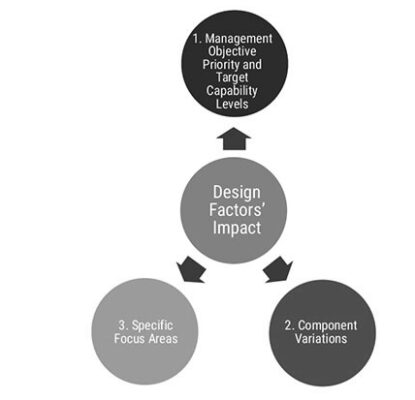The Impact of Design Factors
COBIT 2019 framework is a flexible framework. The framework can be customized to suit The organizational requirements are used as a basis for . Design factors assists customization of the governance system.
There are many factors to consider, few common ones can be
- the organizational character and profile
- the size of the organizational
- the organizational industry sector
- regulatory landscape
- threat landscape
- role of IT in the organization
- technology-related infrastructure
The impact of these factors is specific to the organization under consideration. There are internal and external factors which impact the design og the system for governance and management of I&T infrastructure as per the COBIT 2019 Framework.
These factors influences the design of an organizational governance system, as

The impact can be:
- Objective priority/selection – The COBIT 2019 core model has 40 governance and management objectives having a natural priority. The factor influences the natural priority amongst the 40 governance and management objectives. For example, a company faces a high threat landscape because of which, it will be needing a highly capable security-related processes.
- Components variation: Components helps in achieving governance and management objectives The variation of the component which needs to be selected for the governance system is influenced by the design factor.Specific variation can be specified. For example, a company operates in highly regulated environment because of which, it will allocate more relevance to documented work procedures and roles.
- Specific focus area guidance: Few factor can make a case for the variation of the core COBIT model as per the specific organizational requirement.
Go back to COBIT 2019 Tutorial page

Are you preparing to take the COBIT 2019 Foundation exam?Take a Quiz
